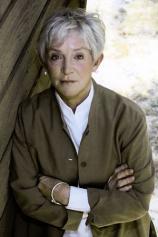Reading Group Guide
Discussion Questions
Enemy Women

1. The first chapter of the book paints the Civil War in the Ozarks with a very broad brush. It is a short chapter, and yet the emotional tone of the chapter shifts between the beginning and the end. How does the tone change, and what techniques does the author use to change it? What is the tone in the beginning of the chapter; what is it at the end of the chapter?
2. The scope of the novel is larger than Adair's personal relationships with her family and the Major. There are battle scenes and long journeys, depictions of the city of St. Louis and its wartime waterfront. What technical choices does the author make to distinguish the "larger picture" scenes from the narratives that deal exclusively with personal relationships?
3. Although Enemy Women is a novel, many of the historical events it describes are real, and the author includes snippets from letters, journals, newspapers, and military dispatches at the beginning of each chapter. Do you like this technique of mixing the actual with the imagined? How does it affect your reading and/or enjoyment of the narrative? Is there a thread or ongoing story unfolding through the historical quotes themselves?
4. Do you think the author has succeeded at portraying 19th century personalities and attitudes through her characters? Or do you feel she has simply transposed late 20th century attitudes and behavior onto the Civil War era? What's the difference?
5. The author goes against convention by not using quotation marks throughout the book. How did this unusual technique make you feel? Were you immediately comfortable, or did it take you a while to get used to it? How did it affect your experience of the dialogue?
6. Adair, and other characters in the book, reveal their inner lives through their actions rather than through devices such as interior monologue or omniscient description or flashbacks to childhood. How is this different from methods usually employed in other novels? Does the author use dialogue to reveal character?
7. There are no flashbacks in the novel. Where and how does Adair impart some information about the Colley family's life before the war? The author then doubles back and casts doubt on the authenticity of the information. How and why does the author do this?
8. At one point, the Major says to Adair, "Had you met me at a social gathering, you would probably not even have spoken to me, because I am a Yankee officer." Had Adair and the Major met under other circumstances, would she have ignored him?
9. Enemy Women has a rich array of minor characters. Among them are Christopher Columbus Jones (the ostler at the Major's boardinghouse), Lt. Brawley, Mr. and Mrs. Greathouse (the couple who argue over the hat), Greasy John, the "botanical steam doctor" in the town of Valles Mines, Jessie Hyssop, Colonel Timothy Reeves (who only appears at the very end of the book, although we hear about him from the beginning). Who are your favorite minor characters, and why?
10. Rivers play an important role in Enemy Women, both as symbols and as actual barriers. In the 19th century, rivers were far more than symbols; they were dangerous crossing points that had to be negotiated at some risk. What significance is there in the name of each river? Does a change occur to the hero or heroine as he or she meets new tests or enemies on the far side?
11. Adair changes over the course of the book, from an audacious, outspoken, fearless young woman to someone more inner-directed, cautious, quiet, even frightened. Where are the crucial scenes that demonstrate this transformation?
12. When Adair finally returns home, she finds a family of traveling players has occupied her empty house. What purpose does this serve in the narrative? Is the author being lightly satiric through the player's explanation of the roles of the "aristocratic girl" and the "saucy girl"?
13. At the end of the book, when the Major stands before the empty Colley homestead and calls out to Adair, saying he has kept his promise, what famous early 20th century poem do these lines evoke?
14. In the beginning of the book, Adair seems dubious about marriage, and reluctant to give up her freedom. By the end of the book, though, she has apparently changed her mind. How do we know that Adair has fallen in love with the Major, despite her doubts and confusions?
15. At the end of the story, Adair is weak, in many ways as faded and ragged as the Confederacy itself. What small, sneaky symbol at the very end gives the reader hope that Adair may recover and flesh out to become her old self again? (Hint, hint: It's up in the sky.)
Enemy Women
- Publication Date: February 1, 2003
- Paperback: 336 pages
- Publisher: Harper Perennial
- ISBN-10: 0060938099
- ISBN-13: 9780060938093








